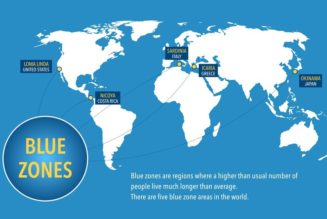
According to the data gathered and analyzed between 2014 and 2018, we found that males with disabilities had lower LE/HALE-NHIS at the first age than females (males and females were 68.54/58.98 and 71.43/59.24 years, respectively). For both sexes, the disability type with the highest and lowest LE and HALE-NHIS were hearing disability and respiratory dysfunction, respectively. Furthermore, autism spectrum disorder and mental disorder had the smallest and largest gap between LE and HALE-NHIS, respectively.
In this study, the LE at birth for PWDs was lower than that of NDs. The level of LE for PWDs (2014–2018) was similar to that of the Korean general population from 1980 to 1990 (Males: 68.4 years in 1992, Females: 71.5 years in 1982) [31]. Additionally, the level of LE at birth for PWDs (2014–2018) was similar to that of Russia in 2019 (68.2 years) for males [32] and India in 2019 (72.2 years) for females [32]. Males with disabilities had a lower LE at the first age than females. Another study on PWDs in Korea showed comparable results, which were 66.3 and 70.2 years for males and females in 2017, respectively [31].
We observed the LE and HALE-NHIS at the first age of people with hearing disabilities and those with respiratory dysfunction were the highest and lowest, respectively. Differences were observed among the disability types. Compared with previous studies that calculated LE using NHIS in Korea, the LE of PWDs with hearing disabilities was similar at 75.1 (our result was 77.5 years) and 81.3 (our result was 83.1 years) years for males and females, respectively; those of respiratory disability were also similar at 20.7 (our result was 23.3 years) and 17.1 (our result was 18.7 years) years for males and females, respectively [17]. The average age (65.8 years) and age at death (80.3 years) of PWDs with hearing disabilities were higher than those of PWDs with other disabilities; therefore, the LE tended to be estimated as high [33]. Overall, the LE reported in our study was estimated to be higher than that reported by Bahk et al. [17]. Although it is difficult to assess the accuracy of this estimation because there were no official statistics on PWDs in Korea, we may consider several possibilities regarding the difference between the studies. First, these could be attributed to the data source. In our study, we used official data directly, which ensured its accuracy and reliability. In the study by Bahk et al. [17], mortality data were linked to NHIS data; thus, it may differ from the official data [17]. Second, modeling was employed in this study. We developed a standard model for PWDs, whereas Bahk et al. [17] adopted a model that was suitable for the general population. Third, we aggregated data over a 5-year period (2014–2018), whereas Bahk et al. aggregated data over a 10-year period (2008–2017); thus, the deaths reported in our study reflected recent mortality trends. Thus, considering the known improvements in mortality rates, it is possible that our mortality data provided lower estimates and our LE data provided higher estimates than Bahk et al. [17].”
Notably, our results can be compared to those of other countries. Similarly, in the case of patients with traumatic brain injury who had some walking ability in the United States, LE was estimated to be 50 and 55 years for males and females, respectively [13]. Conversely, the results of other disability types, such as autism spectrum disorder, differed from those of previous studies because the classification of disability in Korea encompasses various disability states while targeting specific disease groups in other countries. For instance, the LE of 5-year-old males with autism spectrum disorder was 52.0 and 62.0 years in our study and that of Shavelle and Strauss [34], respectively, with a 10-year difference, whereas it was 47.0 and 62.5 years in our study and that of Shavelle and Strauss [34], respectively, for females, with a difference of 15.5 years (Additional file 6). The LE of females with an autism spectrum disorder in our study was significantly low because person-years and the number of deaths were relatively small for a stable fitting model. However, the studies on HALE were more limited. Furthermore, there are no type-specific studies in Korea, and it is difficult to compare the HALE in other countries because the targeted PWDs were specific age groups, and the definition of prevalence was inconsistent [14, 16, 18, 35].
The differences between LE and HALE estimates among people with severe disabilities were greater than that of those with mild disabilities. However, the difference indicates that when considering lower LE, the HALE, calculated by the rate of hospitalization for more than seven days, for PWDs with severe disabilities was lower than that for PWDs with mild disabilities. Therefore, the severity of the disability could affect LE and HALE estimates related to hospitalization prevalence. A similar result was obtained in a study from Brazil. In a study using the City of Campinas Health Survey for Brazilian older adults, the HALE of people aged 60 years with a mild or moderate functional disability was 13.5 and 14.9 years in males and females, respectively, whereas that for those with a severe functional disability was 17.5 and 20.0 years in males and females, respectively [19].
Regarding methodologies, this study contributed important advances to constructing a suitable life table model for PWDs. Previous studies in Korea calculated LE using a single general life table model and targeted the entire population of PWDs [27, 36]. In our study, we attempted to develop an optimal life table model for the entire population of PWDs and include each disability type. Therefore, we conducted a similar process to that of the general population to evaluate our method and compare official statistics and estimated values. Furthermore, we measured age-specific LE across all ages despite the studies of other countries being confined to the abbreviated life tables.
We found that the different HALEs were estimated according to the prevalence measures, which is consistent with Kang et al. [30] HALE-NHIS was higher than HALE-DF and HALE-PH, and the gap between PWDs and NDs for HALE-NHIS did not differ from that of LE. Additionally, the gap between groups depended on variations in mortality for LE and prevalence for HALE. The crude death rate of PWDs was four times that of the general population [33], whereas the number of inpatient days per person was approximately 2.5 times [37]. Moreover, the inpatient days may be underestimated due to the high unmet healthcare needs (UHCNs) among PWDs [4].
From age ˃70 years (75 and 70 years old in males and females, respectively), the HALE-NHIS of NDs was lower than that of PWDs. However, the reverse phenomenon may occur in the older age group because PWDs had more opportunities for medical care services based on the Korean disability policy, which was aimed at strengthening career support systems for stable income and enhancing the accessibility of healthcare services for PWDs [5]. The proportion of UHCNs among PWDs was lower than that of NDs in 2015 among older adults [4]. Therefore, improving welfare policies for PWDs could affect the HALE-NHIS of the older PWDs by decreasing the proportion of UHCNs for PWDs, whereas that of the older NDs in the welfare blind spots may be relatively lowered.
This study had some limitations. First, the original KNRC data for each year were insufficient. Therefore, we aggregated all available data; this method is used in Norway, with a small population [38] (approximately 5,370,000 in 2020) [39]. Although the data from NHIS [17] could be used to obtain sufficient samples, the data could not reflect the actual number of registered PWDs because the data was established at the beginning of each year. For example, Bahk et al. [17] presented 35,660,309 person-years (2008–2017), whereas the official number was 24,776,890. Second, the data for each disability type were also insufficient. Therefore, obtaining the number of deaths for all ages was challenging. However, to overcome this limitation, we requested more data for additional years but could not receive it; therefore, we fitted the non-linear regression model to impute missing values. Finally, LE in our study was period LE, which assumed that the death rates applied equally throughout the remainder of the person’s life [40]. Because cohort refers to a group of people with the same birth year, a cohort LE may be appropriate for our data based on registered PWDs with different registration years [40]. Although period LE tends to be lower than cohort LE, the differences are historically comparable [40]. Despite these limitations, our study is the first in Korea to develop the characterizing life table model and estimate LE and HALEs based on the type of disability by sex. Therefore, these findings present the health and welfare risks facing PWDs in Korea.









